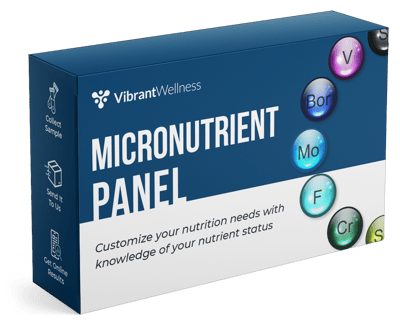Hidden Patterns in Teen Girls with Autoimmunity
If you’ve spent any time around teenagers, it might seem like they can deal with just about anything — crappy diets, late nights, emotional stress, and constant hustle. But are they really getting away unharmed?
We often assume that teens are resilient and that their bodies can bounce back. Yet behind the scenes, adolescence may be one of the most vulnerable windows for immune dysregulation, especially for girls. Hormonal shifts, processed diets, xenoestrogen exposure, chronic stress, and gut disruption can quietly erode immune tolerance, potentially setting off autoimmune activation.
This article explores several common, modifiable factors that may increase autoimmune vulnerability in adolescent girls, along with red flags to watch for and tools like integrative hormone testing to help providers intervene early.
Table of Contents
Why Adolescence Can Be a Time of Immune Disruption
At the root of autoimmune disease is a dysregulated immune system. Usually, the immune system is like a guard on night watch. It calmly surveys the environment until a real threat appears. The guard and the immune system ramp up when danger is near, then return to a resting, surveillance state.
But in autoimmunity, the system doesn’t return to rest. It stays on high alert, overreacting to both real (e.g., viruses, bacteria) and benign (e.g., food proteins or the body’s own tissues) triggers.
In adolescent girls, loss of immune tolerance can be primed by a perfect storm of internal and external stressors: hormonal shifts, toxic exposures, nutrient gaps, and early gut damage.
Together, these factors set the stage for autoimmune activation during the teen years.

Key Mechanism #1: Hormonal Shifts in Adolescence
A Crucial Period for Immune Regulation
Sex hormones are deeply involved in immune regulation, but their impact in adolescence is often overlooked.
- Androgens (like testosterone) are generally considered protective against autoimmunity.
- Estrogen is more complex. It is broadly immune-promoting, but high or low levels may contribute to dysregulated immune function and autoimmune risk:
- Estrogen enhances the IL-4 pathway, which in turn inhibits the production of pro-inflammatory cytokines. It also suppresses NF-kB, a key driver of inflammation.
- However, excess estrogen may increase antibody production, raising the risk that the immune system mistakenly targets the body’s own tissues.
- Conversely, low estrogen can weaken immune defense against pathogens, potentially triggering autoimmune activation.
- Progesterone, by contrast, plays a calming, regulatory role. It supports the development of regulatory T cells, modulates inflammatory signaling, and protects against immune overactivation, the very mechanism that autoimmune prevention seeks to support.
These differences in sex hormone action are one reason autoimmune conditions are more common in females than males, even starting at puberty.
Clinical Scenarios in Teen Girls
There are three common scenarios in adolescence where estrogen levels can outpace progesterone, potentially causing immune dysregulation:
- Anovulatory Cycles (common in early puberty and PCOS)
Early menstrual cycles are typically anovulatory, without ovulation. In these cases, young women may experience bleeding, but there is no progesterone production. Estrogen rises unchecked, and the immune system loses out on progesterone’s regulating influence. In girls with underlying vulnerabilities, this unopposed estrogen may compound dysregulation of the immune system. - Obesity and Inflammation
Obesity affects over 20% of U.S. adolescent girls. Adipose tissue acts as an endocrine organ, producing estrogen and fueling low-grade inflammation. This combination of elevated estrogen and chronic inflammation can push the immune system into a feedback loop that lowers tolerance and increases autoimmune risk. - Xenoestrogen Exposure
Beauty products have become a daily ritual for many teenage girls who layer on dozens of chemical exposures before breakfast:- Fruity body sprays and shimmer lotions
- Drugstore makeup
- Fragrances in lotions, hair products, and deodorants

These estrogen imposters, such as phthalates, parabens, triclosan, and BPA, bind to estrogen receptors and either make receptors more sensitive or prolong the receptor’s activation, keeping the signal "on" longer than usual. They also modulate immune-signaling pathways like NF-kB, which promotes inflammation.
The result is an immune system that becomes hypervigilant and overactive, like a cornered, wounded animal ready to lash out.
The burden is even greater when detoxification pathways are sluggish, which is common in teens dealing with constipation or lacking the nutrients needed to support liver function.
What To Assess Clinically
 To get ahead of hormonal immune disruption, clinicians can evaluate:
To get ahead of hormonal immune disruption, clinicians can evaluate:
- Hormone balance with the Vibrant Hormone Zoomer, including estrogen/progesterone levels and metabolites
- Metabolic health markers such as fasting glucose, A1c, fasting insulin or c-peptide, leptin
- Inflammatory markers, including CRP and ferritin
Adolescent hormone testing and other panels offer a window into the early physiologic patterns often preceding immune dysregulation. Especially in teens, recognizing this state is not just about managing symptoms; it’s about identifying hidden risks before autoimmune activation gains momentum.
Key Mechanism #2: The Immune Cost of a Typical Teen Diet
Teen girls have increased nutrient demands due to rapid growth, hormonal shifts, and the physiological toll of chronic stress. But the reality is that many are running on empty.
Three common dietary patterns seen in adolescent girls can compromise immune function in significant ways:
1. Nutrient-Poor Diets
Of all the systems in the body, think of the immune system as a "nutrient hog.” The Standard American Diet (SAD) is notoriously low in the very nutrients essential for immune system function, including:
- Vitamins A and D
- Omega-3 fatty acids
- Iron (also lost during menstruation)
- Zinc
- Selenium
- Magnesium
These nutrients fuel immune signaling, antioxidant defenses, and gut barrier integrity, foundations of immune resilience.
2. Gut Damage from Processed Foods
Studies show that highly processed, ultra-palatable foods (common staples in many teen diets) reduce microbial diversity and disturb the balance of beneficial bacteria.
They also contribute to “leaky gut,” which activates the immune system and fuels low-grade, chronic inflammation.

In susceptible individuals, this ongoing immune stimulation, combined with exposure to foreign antigens and bacterial endotoxins like lipopolysaccharides (LPS), can erode self-tolerance, leading the immune system to target the body’s own tissues. This breakdown in regulation may set the stage for autoimmune activation.
3. Excess Sugar and Immune Dysfunction
According to the CDC, excess sugar intake is a growing concern for teens, with average daily consumption hovering around 68 grams (17 teaspoons). As a dietitian, I recommend staying under 20 grams (5 teaspoons) of added sugar daily to support immune and hormone health.
Chronic sugar overload impairs immune function in multiple ways:
- Weakens neutrophil and macrophage function, reducing defense against infections
- Disrupts gut microbial balance
- Increases systemic inflammation
- Contributes to hormone disruption. Chronically elevated insulin, whether from excess sugar or cortisol-driven stress, can downregulate the aromatase enzyme, increasing androgens and impairing ovulation. This reduces progesterone synthesis, which plays a key role in immune tolerance.
What To Assess Clinically
- Micronutrient testing (via the Micronutrient Panel) to evaluate immune-supportive nutrients
- Microbiome testing (via the Gut Zoomer) to assess gut integrity, inflammation, and diversity
Nutrient status and gut health are two of the most actionable windows into immune vulnerability.
Identifying deficiencies and microbiome imbalances allows providers a chance to shift the trajectory before autoimmunity takes hold.
Key Mechanism #3: Antibiotics and the Gut
Antibiotics are often necessary and life-saving, especially in childhood. But when used frequently or repeatedly, they can disrupt the gut microbiota (especially during critical periods of immune development) and set the stage for long-term immune dysregulation:
- Low microbial diversity reduces immune resilience and increases susceptibility to chronic inflammation. The gut relies on a robust and diverse ecosystem to regulate immune signaling, promote tolerance, and protect the mucosal barrier.
- Dysbiosis, or microbial imbalance in the gut, has been identified as a key driver of both local and systemic autoimmune diseases, including IBD, type 1 diabetes, rheumatoid arthritis, and multiple sclerosis.
- The delicate intestinal lining is also sensitive to antibiotics, which often contributes to increased gut permeability (leaky gut) and the cascade of immune activation.
This is a strong clinical scenario for using the Gut Zoomer, which identifies microbial imbalances, digestive dysfunction markers, and pathogens that may contribute to chronic inflammation and autoimmune risk.
The good news is that microbial diversity and gut barrier integrity can often be restored with the proper support, laying the foundation for improved immune regulation and long-term health.
Case Study: When the “Typical Teen” Isn’t Thriving
Patient Profile
A 15-year-old girl presented with acne, PMS that frequently kept her home from school, and a lingering cold she couldn’t shake. She reported low energy and frequent constipation.
Her diet reflected a typical teen pattern: sugary, carb-heavy breakfasts; a sandwich or protein bar with chips for lunch; sugary coffee drinks after school; and a relatively balanced dinner.

Functional Testing Findings
The Vibrant Micronutrient Panel and Vibrant Gut Zoomer revealed the following:
- Nutrient deficiencies: vitamin D, zinc, magnesium
- GI findings: low SIgA, low Akkermansia muciniphila, and overgrowth of a few opportunistic pathogens
Interventions and Outcomes
We introduced more fruits and vegetables into the patient's diet and swapped sugary coffee drinks for low-calorie options. We increased hydration and magnesium supplementation to help restore regular bowel movements and added a multivitamin to support micronutrient repletion.
She also transitioned to cleaner personal care products and used chasteberry to support ovulation. Within a few months, her energy improved, her periods became lighter and more manageable, and she no longer missed school.
Autoimmune Conditions Common in Teen Girls
While autoimmune disease is often considered an adult concern, many conditions can first present during adolescence.
Common autoimmune conditions seen in adolescent girls include: 
- Type 1 diabetes
- Celiac disease
- Crohn’s disease and ulcerative colitis
- Lupus (SLE)
- Psoriasis (often on the scalp, knees, or elbows)
- Hashimoto’s thyroiditis and Graves’ disease
- Juvenile idiopathic arthritis (JIA)
- Sjögren’s syndrome
- Juvenile dermatomyositis
Key Tool: The Autoimmune Zoomer can help identify early autoantibody patterns across multiple systems, allowing providers to spot immune reactivity long before full disease expression
Red Flags to Watch for in Clinical Practice
Autoimmune disease doesn’t typically begin with a diagnosis; it starts with subtle immune dysregulation that can appear unexpectedly. These early warning signs in teen girls often get dismissed as “just hormones” or growing pains, but they may be the body’s first signals that something deeper is brewing.
- Clusters of vague, persistent symptoms: IBS, fatigue, rashes, anxiety
- Pain or swelling in joints or muscles
- Significant GI symptoms: cramping, diarrhea, fatigue, bloody stools, or weight loss
- Chronic headaches or migraines
- Flare cycles: symptom-free stretches followed by reactivation, often in times of stress
- Family history of autoimmune disease
- Frequent antibiotic or birth control use (both can contribute to leaky gut)
- History of trauma or chronic stress as a potential immune trigger
Key Tools for Early Evaluation
- Detailed health history: focusing on immune, GI, menstrual, toxicity, and stress patterns.
- Standard labs: CBC, CMP, liver enzymes, iron panel (including ferritin)
- Micronutrient Panel: to assess immune-relevant nutrients like zinc, selenium, vitamins A & D, and omega fatty acids
- Gut Zoomer: especially for teens with GI issues, skin conditions, a history of multiple rounds of antibiotics, or mood symptoms
- Hormone Zoomer: to assess estrogen-progesterone patterns, cortisol output, and endocrine disruptors (BPA, phthalates, parabens)
- Autoimmune Zoomer: for early detection of organ- or tissue-specific autoantibodies
Use the combination of symptoms and test results to guide personalized nutrition and lifestyle plans long before full disease expression occurs.
A Window of Opportunity
Autoimmune progression doesn’t have to be inevitable with appropriate interventions during windows of immune vulnerability, such as the hormone changes of adolescence. Integrative hormone testing and nutrient deficiency tests, along with functional assessments of gut integrity, can proactively uncover early immune imbalance and guide personalized support.
Restoring resilience before chronic disease takes hold starts with understanding the symptoms. When we catch immune dysregulation in adolescence, we don’t just treat a symptom — we can change the trajectory of a young woman's future health.
About the Author
Alison Bame, RD, CFMP, is a Registered Dietitian, Certified Functional Medicine Practitioner, and Hormone Expert specializing in women's health, midlife weight management, and autoimmune conditions. With over 15 years of experience, she helps women over 40 navigate perimenopause, hormonal imbalances, and metabolic challenges using a root-cause, functional medicine approach. A passionate educator and advocate for proactive healthcare, Alison empowers women to take charge of their health through personalized nutrition, hormone balance, and gut-immune support. Learn more about her work at AlisonBame.com.
Regulatory Statement:
The information presented in case studies have been de-identified in accordance with the HIPAA Privacy protection.
The general wellness test intended uses relate to sustaining or offering general improvement to functions associated with a general state of health while making reference to diseases or conditions. This test has been laboratory developed and its performance characteristics determined by Vibrant America LLC and Vibrant Genomics, a CLIA-certified and CAP-accredited laboratory performing the test. The lab tests referenced have not been cleared or approved by the U.S. Food and Drug Administration (FDA). Although FDA does not currently clear or approve laboratory-developed tests in the U.S., certification of the laboratory is required under CLIA to ensure the quality and validity of the test.

Alison Bame, RD, CFMP

Find a Provider- Take Control of Your Health
Connect with a provider to access Vibrant Wellness specialty tests and personalized insights that support your long-term health.
Related Articles
Nearly 80% of people with an autoimmune disease are women. This striking statistic underscores the need to examine the potential connection between hormone imba...

For women, menopause marks the end of reproductive capacity, but not the end of hormone activity. Once ovarian hormone production stops, the body depends on per...

Understanding Menstrual-Driven Immune Flares and Clinical Testing Strategies Many women with autoimmune conditions report that their autoimmune symptoms fluctua...






